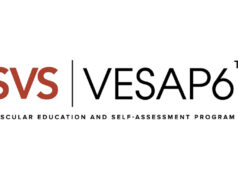
The Society for Vascular Surgery (SVS), American Venous Forum (AVF), and American Vein and Lymphatic Society (AVLS) have released the second and final part of new guidelines for the management of varicose veins of the lower extremities. The recommendations, which update the 2011 SVS and AVF guidance on the topic, were published online ahead of print in the Journal of Vascular Surgery: Venous and Lymphatic Disorders (JVS-VL).
The new document focusses on the following topics:
- Evidence supporting the prevention and management of varicose vein patients with compression
- Treatment with drugs and nutritional supplements
- Evaluation and treatment of varicose tributaries
- Superficial venous aneurysms
- The management of complications of varicose veins and their treatment
The publication—authored by Peter Gloviczki (Mayo Clinic, Rochester, USA) and 19 other members of a multispecialty guideline writing committee—follows last year’s release of part one of the guidelines, which addressed duplex scanning and treatment of superficial truncal reflux.
Gloviczki and colleagues outline in their introduction the reason behind the two-part publication of the updated guidelines. They note that all recommendations in part one were based on a new, independent systematic review and meta-analysis that “provided the latest scientific evidence to support updated or completely new guidelines on evaluation with duplex scanning and on the management of superficial truncal reflux in patients with varicose veins”. However, the authors recognised “several additional important clinical issues” needed to be addressed, despite many having varying levels of scientific evidence associated with them. For this reason, when a systematic review was not available, the writing committee based ungraded statements on a comprehensive review of the literature, combined with unanimous consensus of the expert panel.
Alongside a series of recommendations, the writing committee highlight “several” knowledge gaps on the natural history, evaluation, prevention and treatment of patients with varicose veins, highlighting their top 20 recommendations for future research. The most important three they identify are comparative studies of polidocanol endovenous micro-foam versus physician-compounded foam for treatment of varicose tributaries, comparative studies of polidocanol endovenous micro-foam versus other techniques of thermal and non-thermal ablation of incompetent superficial truncal veins, and best metric of axial reflux to determine ablation of superficial truncal veins.
The guideline document can be accessed in full on the JVS-VL website: https://www.jvsvenous.org/article/S2213-333X(23)00322-0/fulltext











